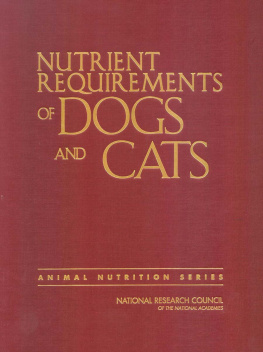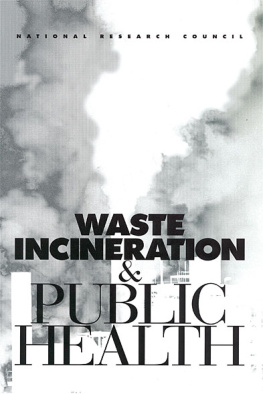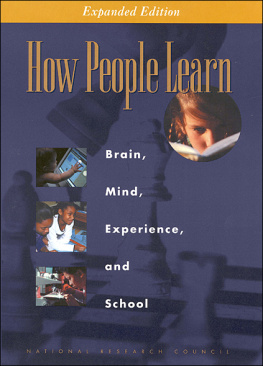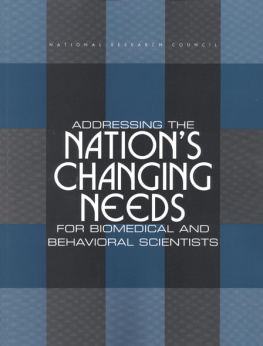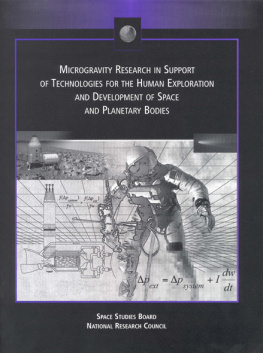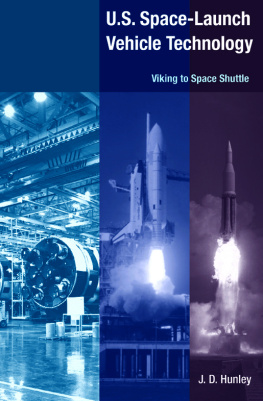National Research Council - STREAMLINING SPACE LAUNCH RANGE SAFETY
Here you can read online National Research Council - STREAMLINING SPACE LAUNCH RANGE SAFETY full text of the book (entire story) in english for free. Download pdf and epub, get meaning, cover and reviews about this ebook. year: 2000, publisher: NATIONAL ACADEMY PRESS, genre: Politics. Description of the work, (preface) as well as reviews are available. Best literature library LitArk.com created for fans of good reading and offers a wide selection of genres:
Romance novel
Science fiction
Adventure
Detective
Science
History
Home and family
Prose
Art
Politics
Computer
Non-fiction
Religion
Business
Children
Humor
Choose a favorite category and find really read worthwhile books. Enjoy immersion in the world of imagination, feel the emotions of the characters or learn something new for yourself, make an fascinating discovery.

- Book:STREAMLINING SPACE LAUNCH RANGE SAFETY
- Author:
- Publisher:NATIONAL ACADEMY PRESS
- Genre:
- Year:2000
- Rating:5 / 5
- Favourites:Add to favourites
- Your mark:
- 100
- 1
- 2
- 3
- 4
- 5
STREAMLINING SPACE LAUNCH RANGE SAFETY: summary, description and annotation
We offer to read an annotation, description, summary or preface (depends on what the author of the book "STREAMLINING SPACE LAUNCH RANGE SAFETY" wrote himself). If you haven't found the necessary information about the book — write in the comments, we will try to find it.
National Research Council: author's other books
Who wrote STREAMLINING SPACE LAUNCH RANGE SAFETY? Find out the surname, the name of the author of the book and a list of all author's works by series.
STREAMLINING SPACE LAUNCH RANGE SAFETY — read online for free the complete book (whole text) full work
Below is the text of the book, divided by pages. System saving the place of the last page read, allows you to conveniently read the book "STREAMLINING SPACE LAUNCH RANGE SAFETY" online for free, without having to search again every time where you left off. Put a bookmark, and you can go to the page where you finished reading at any time.
Font size:
Interval:
Bookmark:
STREAMLINING SPACE LAUNCH RANGE SAFETY
Committee on Space Launch Range Safety
Aeronautics and Space Engineering Board
Commission on Engineering and Technical Systems
National Research Council
NATIONAL ACADEMY PRESS
Washington, D.C.
NOTICE: The project that is the subject of this report was approved by the Governing Board of the National Research Council, whose members are drawn from the councils of the National Academy of Sciences, the National Academy of Engineering, and the Institute of Medicine. The members of the committee responsible for the report were chosen for their special competencies and with regard for appropriate balance.
This study was supported by the U.S. Air Force Space Command under contract No. FO5604-99-C-9004. Any opinions, findings, conclusions, or recommendations expressed in this publication are those of the authors and do not necessarily reflect the view of the Air Force.
ISBN 0-309-17214-4 e-pub ISBN
International Standard Book Number: 0-309-06931-9
Available in limited supply from: Aeronautics and Space Engineering Board, HA 292, 2101 Constitution Avenue, N.W., Washington, DC 20418. (202) 334-2855 www4.national-academies.org/cets/asebhome.nsf
Additional copies available for sale from: National Academy Press, 2101 Constitution Avenue, N.W. Box 285, Washington, DC 20055. 1-800-624-6242 or (202) 334-3313 (in the Washington Metropolitan area).
www.nap.edu
National Academy of Sciences
National Academy of Engineering
Institute of Medicine
National Research Council
The National Academy of Sciences is a private, nonprofit, self-perpetuating society of distinguished scholars engaged in scientific and engineering research, dedicated to the furtherance of science and technology and to their use for the general welfare. Upon the authority of the charter granted to it by the Congress in 1863, the Academy has a mandate that requires it to advise the federal government on scientific and technical matters. Dr. Bruce M. Alberts is president of the National Academy of Sciences.
The National Academy of Engineering was established in 1964, under the charter of the National Academy of Sciences, as a parallel organization of outstanding engineers. It is autonomous in its administration and in the selection of its members, sharing with the National Academy of Sciences the responsibility for advising the federal government. The National Academy of Engineering also sponsors engineering programs aimed at meeting national needs, encourages education and research, and recognizes the superior achievements of engineers. Dr. William A. Wulf is president of the National Academy of Engineering.
The Institute of Medicine was established in 1970 by the National Academy of Sciences to secure the services of eminent members of appropriate professions in the examination of policy matters pertaining to the health of the public. The Institute acts under the responsibility given to the National Academy of Sciences by its congressional charter to be an adviser to the federal government and, upon its own initiative, to identify issues of medical care, research, and education. Dr. Kenneth I. Shine is president of the Institute of Medicine.
The National Research Council was organized by the National Academy of Sciences in 1916 to associate the broad community of science and technology with the Academys purposes of furthering knowledge and advising the federal government. Functioning in accordance with general policies determined by the Academy, the Council has become the principal operating agency of both the National Academy of Sciences and the National Academy of Engineering in providing services to the government, the public, and the scientific and engineering communities. The Council is administered jointly by both Academies and the Institute of Medicine. Dr. Bruce M. Alberts and Dr. William A. Wulf are chairman and vice chairman, respectively, of the National Research Council.
ROBERT E. WHITEHEAD, chair,
National Aeronautics and Space Administration (retired), Henrico, North Carolina
W. GAINEY BEST II,
Lockheed Martin Astronautics, Denver, Colorado
JOHN L. BYRON,
Johnson Controls, Inc., Cocoa Beach, Florida
BENJAMIN A. COSGROVE,
Boeing Commercial Airplane Group (retired), Seattle, Washington
JAMES W. DANAHER,
National Transportation Safety Board (retired), Alexandria, Virginia
KINGSTON A. GEORGE, aerospace consultant,
Santa Maria, California
BILL HAWLEY,
Hughes Space and Communications, Los Angeles, California
JAMES K. KUCHAR,
Massachusetts Institute of Technology, Cambridge
JOYCE A. McDEVITT,
Futron Corporation, Washington, D.C.
JOSEPH MELTZER,
Aerospace Corporation (retired), Redondo Beach, California
JIMMEY MORRELL,
U.S. Air Force (retired), Melbourne, Florida
NORMAN H. SCHUTZBERGER,
TRW Components International, Torrance, California
Liaison from the Aeronautics and Space Engineering Board
FREDERICK HAUCK,
AXA Space, Bethesda, Maryland
Staff
ALAN ANGLEMAN, Study Director
DOUGLAS BENNETT, Research Associate
CHRIS JONES, Senior Administrative Assistant
GEORGE LEVIN, Director,
Aeronautics and Space Engineering Board
JENNIFER PINKERMAN, Research Associate
LINDA VOSS, Technical Writer
MARVIN WEEKS, Senior Administrative Assistant
WILLIAM W. HOOVER, chair,
U.S. Air Force (retired), Williamsburg, Virginia
A. DWIGHT ABBOTT,
Aerospace Corporation, Los Angeles, California
WILLIAM F. BALLHAUS, JR.,
Lockheed Martin Corporation, Bethesda, Maryland
RUZENA BAJSCY,
NAE, IOM, University of Pennsylvania, Philadelphia
ANTHNY J. BRODERICK, Aviation Safety Consultant,
Catlett, Virginia
AARON COHEN,
NAE, Texas A&M University, College Station
DONALD L. CROMER,
U.S. Air Force (retired), Lompoc, California
HOYT DAVIDSON,
Donaldson, Lufkin, and Jenrette, New York, New York
ROBERT A. DAVIS,
The Boeing Company (retired), Seattle, Washington
DONALD C. FRASER,
NAE, Boston University, Boston, Massachusetts
JOSEPH FULLER, JR.,
Futron Corporation, Bethesda, Maryland
ROBERT C. GOETZ,
Lockheed Martin Skunk Works, Palmdale, California
RICHARD GOLASZEWSKI,
GRA Inc., Jenkintown, Pennsylvania
JAMES M. GUYETTE,
Rolls-Royce North America, Reston, Virginia
FREDERICK HAUCK,
AXA Space, Bethesda, Maryland
JOHN K. LAUBER,
Airbus Industrie of North America, Washington, D.C.
GEORGE MUELLNER,
The Boeing Company, Seal Beach, California
DAVA J. NEWMAN,
Massachusetts Institute of Technology, Cambridge
JAMES G. OCONNOR,
NAE, Pratt & Whitney (retired), Coventry, Connecticut
WINSTON E. SCOTT,
Florida State University, Tallahassee
KATHRYN C. THORNTON,
University of Virginia, Charlottesville
DIANNE S. WILEY,
Northrop Grumman, Pico Rivera, California
RAY A. WILLIAMSON,
George Washington University, Washington, D.C.
Staff
GEORGE LEVIN, Director
Space launch is inherently risky, and accidents are not uncommon. However, the U.S. national ranges have an outstanding safety record. Never has a member of the public or the launch site workforce been killed as a result of a launch from the national ranges. The aging systems that have achieved this record are being modernized to improve performance and reduce costs. As part of this effort, the National Research Council (NRC) was asked to determine if alternate approaches to public safety might be more efficient and less expensive than current methods.
Font size:
Interval:
Bookmark:
Similar books «STREAMLINING SPACE LAUNCH RANGE SAFETY»
Look at similar books to STREAMLINING SPACE LAUNCH RANGE SAFETY. We have selected literature similar in name and meaning in the hope of providing readers with more options to find new, interesting, not yet read works.
Discussion, reviews of the book STREAMLINING SPACE LAUNCH RANGE SAFETY and just readers' own opinions. Leave your comments, write what you think about the work, its meaning or the main characters. Specify what exactly you liked and what you didn't like, and why you think so.

